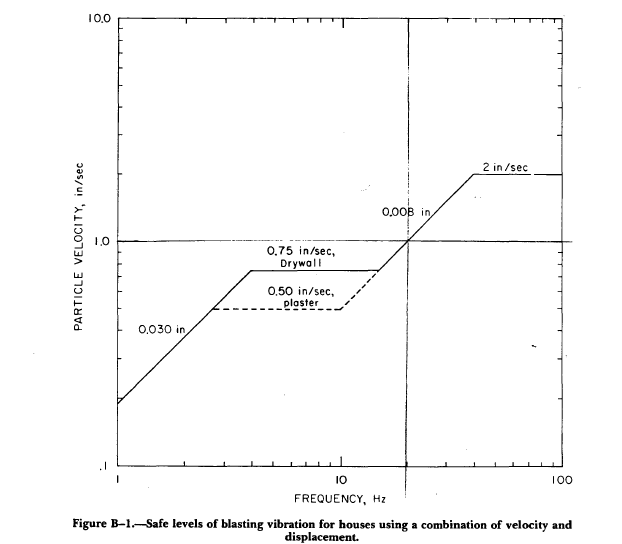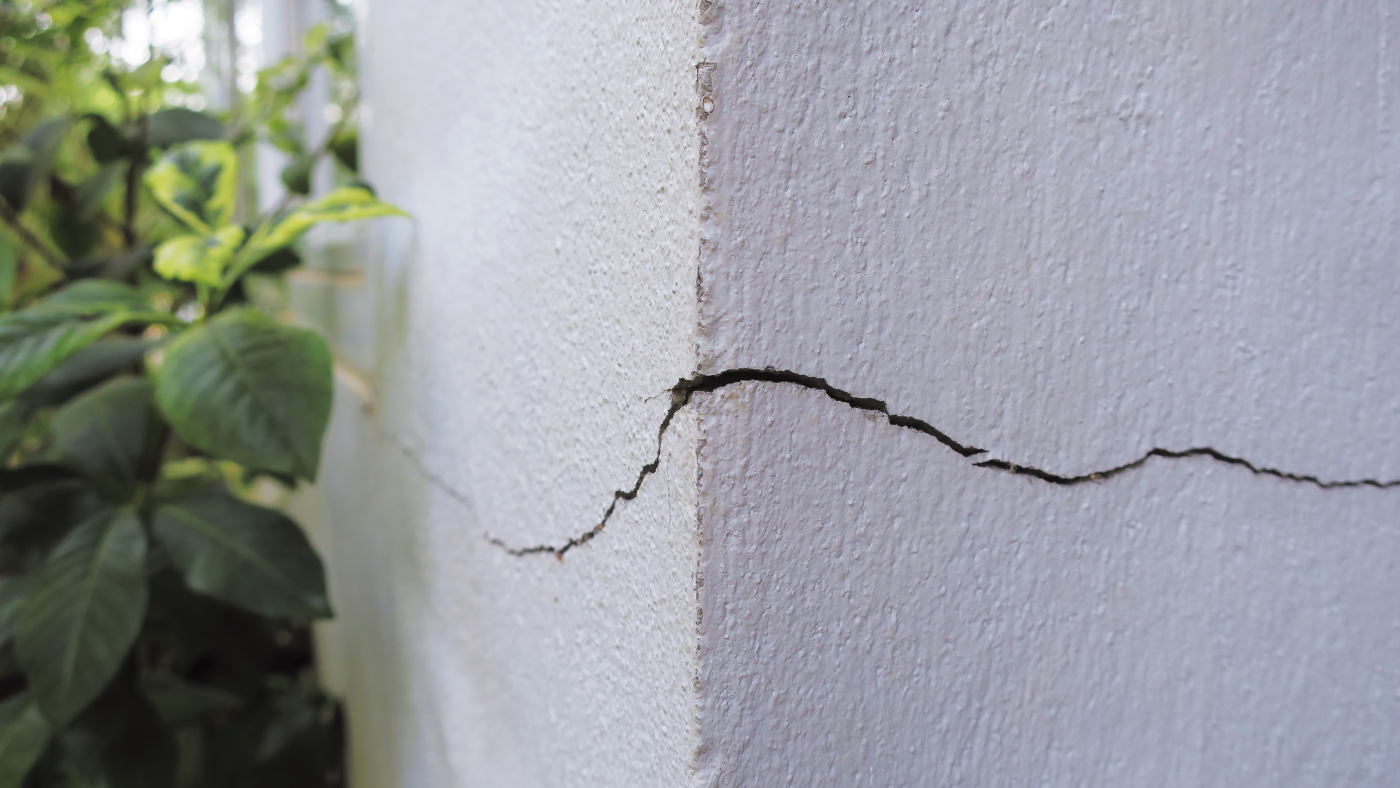When homeowners suspect damage to their property due to nearby vibrations, structural engineers play a pivotal role in navigating these residential claim assignments. Once assigned to the case by claim professionals, these experts do more than just validate or dispute claims. Their goal is to provide clarity in determining the origin of the damage and determine whether the damage emanates from recent activities or other issues that have just become known.
Vibrations may be caused by a multitude of sources including continuous or long-term activity such as construction work, heavy traffic and industrial machinery, or single events such as explosions and earthquakes. These exterior forces can potentially lead to observable damage inside a policyholder’s home, such as cracks in walls or ceilings and shifting or settling of foundations. The damage may be superficial or cosmetic in nature affecting the building finishes or structural, affecting load-bearing elements such as beams, columns, walls or foundations.
As damage from the effects of vibrations can resemble damage from other sources such as aging, settlement, material wear and environmental factors, it is essential for the structural engineer to distinguish between damage caused by vibrations and other pre-existing conditions.
Vibration Levels and the Factors Behind Them
Several sources, both continuous and sudden, can generate vibrations that may cause structural or architectural damage to nearby buildings, concern among residents and building users, or interference with vibration-sensitive activities and equipment. In general, vibration levels are related to:
- the source strength of the vibration, e.g. the size of construction equipment or of an explosion or blast
- the distance between the source event and the receiving building or entity
- the characteristics of the transmitting medium (soils) such as ground conditions
- the construction of the receiving building

Figure 1 – Pile Driving near residential buildings
Vibration levels typically decrease in strength with distance from the source event. Except in the case of fragile and possibly historically significant structures or buildings, vibration-generating events sufficiently distant from the receiving building typically do not reach the levels high enough to cause architectural or structural damage. While vibration levels may be perceptible in buildings close to the source of the vibration, it is important to note that not all perceptible vibrations are of sufficient intensity to damage a structure. Or put another way, the mere detection of vibrations alone is not conclusive evidence that the structure in question has been damaged, cosmetically or structurally.
Investigation Techniques Utilized by Structural Engineers
Structural engineers employ a variety of investigative techniques to provide a thorough evaluation of vibration-related claims such as:
Reviewing Historical Documentation
Engineers may delve into several sources of building records, including drawings, property information, prior maintenance logs, inspection reports, pre-construction surveys, property condition reports and more. The age and condition of the structure will be reviewed, in addition to:
- the reported source and characteristics of the vibrations
- the proximity of the vibration to the loss location
- any monitoring or data collected documenting the size and frequency of the vibrations, pre-construction surveys
- soil characteristics of the site
The potential for damage impacts on the loss location will be assessed. In addition, engineers will review if any evidence that prior cracks or structural issues existed at the loss location prior to the reported vibrations.
Conducting Visual Inspections
During a visual inspection of the loss location, engineers will gather field data such as:
- an assessment of the condition of the building structure
- the location, details and proximity of the vibration source
- the location and characteristics of the reported damage to the building such as cracks, movement or material / structural failure

Figure 2 – Examples of reported vibration related damage
The engineer will commonly conduct site interviews to determine the timeline of the reported events and may gather additional information such as establishing if the conditions are new, pre-existing without deterioration, or pre-existing with deterioration. Engineers will use their expertise and experience to evaluate the reported conditions and establish whether these issues are recent or pre-existing, and if there is a potential connection to the reported vibration event.
Post Inspection Analysis
Following the initial historical research and field investigations, the structural engineer will combine the gathered information with industry standards and research to determine the potential impact of a vibration source on the receiving building.
Established standards that define vibration levels for various vibration sources include:
- USBM RI 8507: Guidelines from the U.S. Bureau of Mines that set empirical thresholds critical for evaluating damage from blasting activities.
- ANSI S2.47-1990: A guide known as the American National Standard: Vibration of Buildings – Guidelines for the Measurement of Vibrations and Evaluation of Their Effects on Buildings.
- FTA Report No. 0123: Transit Noise and Vibration Impact Assessment Manual
- DIN 4150-3: A German standard that outlines permissible vibration levels based on building types.
- The Technical Policy and Procedure Notice # 10/88 (TPPN 10/88) of the New York City Department of Buildings.
These, along with other relevant standards and additional guidelines provide foundational frameworks for analyzing how vibrations affect structures.
Structural engineers may perform calculations to determine the level of vibration that would be reasonably expected at the receiving building based on information provided in these standards on the characteristics and magnitude of the vibration source. Once the vibration levels at the receiving building are established, these levels can be compared to industry research on vibration levels that would be required to damage building structures and materials. This industry research may take into account specific characteristics about the specific structure or structure(s) under review.

Figure 3 – USBM RI 8507 Appendix B, Figure B-1: Safe levels of blasting vibration for houses
Structural engineers will also review field data on the characteristics of the damage, including the condition, size, shape and location of the reported damage. In addition, any relevant monitoring data, pre-construction or other data describing the prior condition of the receiving building, soil conditions and the timeline of the reported damage will be analyzed.
Alleviating Homeowner Concerns
An important part of the claim review process is providing clear and detailed information from the investigation and analysis that can alleviate homeowner concerns. It is natural for some homeowners to attribute cracks and structural issues to nearby construction or other vibration sources. Their heightened awareness can lead to misconceptions and misattribution of the source of damage.
Key factors contributing to this phenomenon include:
Increased Vigilance: During construction, homeowners often scrutinize their environments more closely, noticing cracks they previously overlooked.
Natural Settlement: Damage from the effects of vibrations can resemble natural settlement of the building. Most buildings experience gradual settling over time, leading to minor cracks that can be mistaken for new, recently occurring vibration damage.
Environmental Changes: Seasonal fluctuations can cause materials to expand or contract, generating cracks unrelated to construction.
The structural engineer may also provide additional recommendations in their report that can further alleviate the homeowner’s concerns such as:
- A thorough home survey to identify any existing cracks or structural concerns. This involves checking walls, ceilings, floors and foundations, with particular attention to sensitive areas such as door and window corners, tile grout lines and drywall seams. This documentation of the home’s condition with high-quality photos and videos, using a high-resolution camera to capture close-ups of existing cracks, along with wide-angle shots for context, will help monitor any changes over time.
- Maintaining a crack log, noting the date, location, size and any observations related to environmental factors that may contribute to cracking. During construction, it’s important to monitor the home for changes. Homeowners should take measurements of any cracks using reference markers or crack gauges to track growth.
- If significant structural changes occur, consulting a structural engineer can clarify whether the damage is construction-related, providing professional evaluations that strengthen potential insurance claims.
- If evidence of damage arises, homeowners should contact the construction company to review any pre-construction surveys or other field data such as monitoring reports and reach out to their insurance provider with documented evidence if necessary.
Determining the Root Cause of Structural Damage: Expertise is Key
Determining the true cause of structural damage requires a meticulous, scientific approach from experienced structural engineers. By employing established investigation techniques and adhering to industry standards, these professionals play a vital role in ensuring fair evaluations of vibration-related claims. Their expertise not only supports insurance companies in making informed decisions but also empowers homeowners, providing them with the peace of mind they deserve.
Understanding the difference between legitimate vibration-induced damage and long-standing structural issues is crucial. By actively addressing these concerns, engineers help ensure that valid claims are recognized and that homeowners are shielded from unfounded fears of damage, fostering a fair and equitable claims process.
For more information on vibration, structural damage and the role that expert structural engineers like those at The Vertex Companies LLC can provide in claims, please contact Paul King, paking@vertexeng.com or call 888.298.5162 or submit an inquiry.




